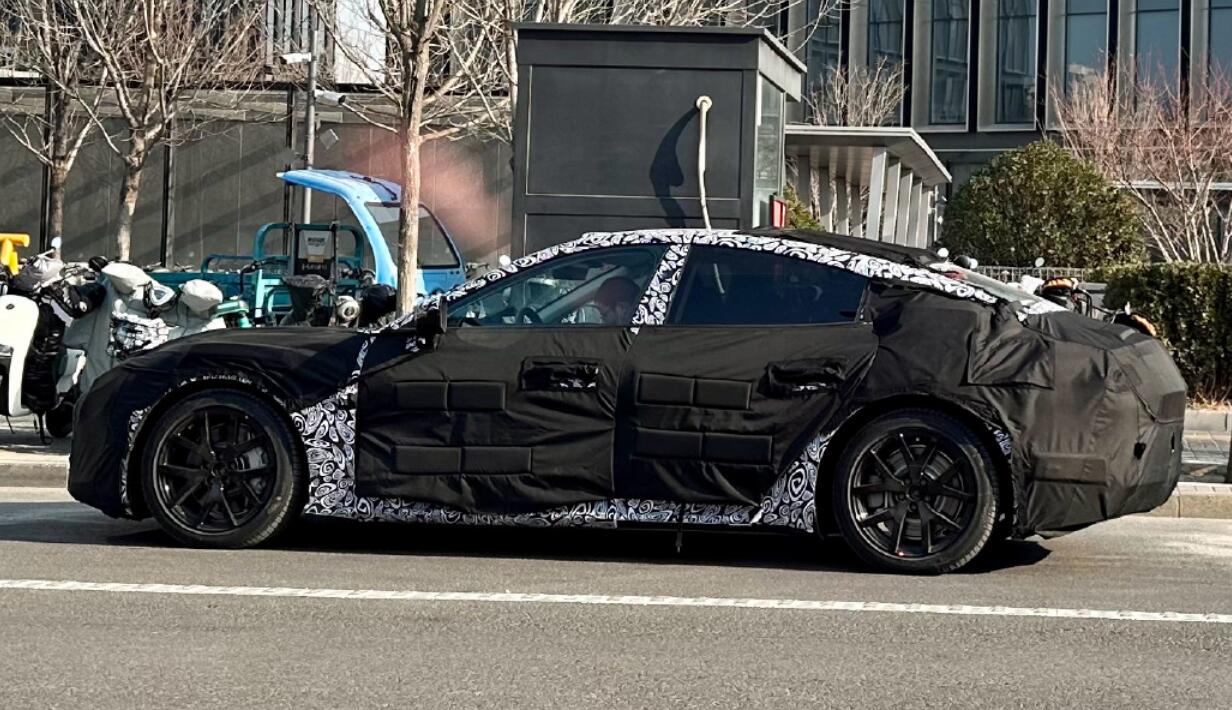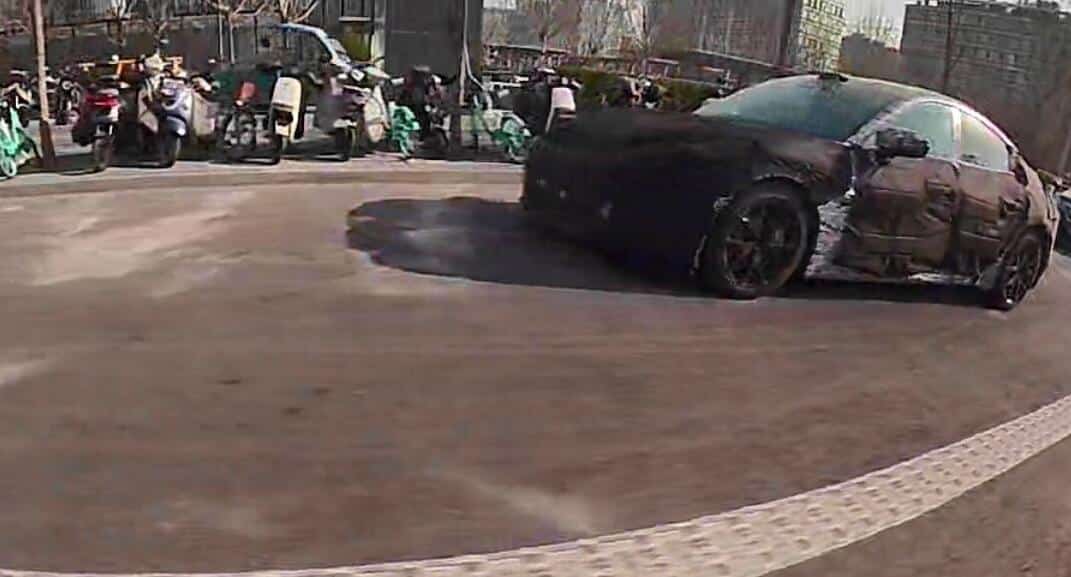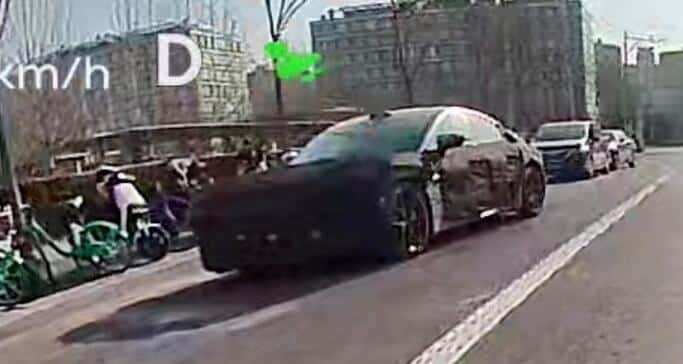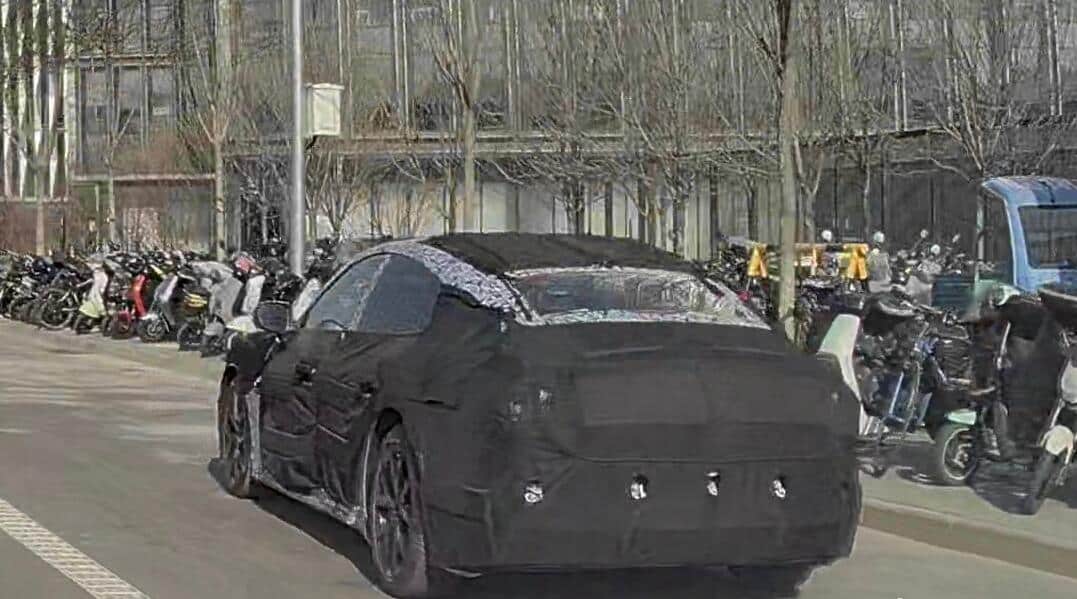Xiaomi's first model will compete with Tesla's Model 3 sedan, but is stronger in size, and performance and similarly positioned to the Xpeng P7, according to local media.
(A spy shot shows what is suspected to be Xiaomi's first model undergoing road tests.)
Chinese smartphone maker Xiaomi (OTCMKTS: XIACF) is working on two electric vehicle models, with the first model aimed at a market priced around RMB 300,000 (43,600), according to a report yesterday by local media outlet LatePost.
Xiaomi's first model will compete with Tesla's Model 3 sedan, but is stronger in terms of size, and performance and is similarly positioned to Xpeng's (NYSE: XPEV) P7, according to the report.
The model is a midsize sedan, internally codenamed Modena, and will include two versions with a starting price that has not been determined yet, according to the report.
The company is currently discussing options for one version of the model with a starting price of RMB 260,000-300,000 and another version with a starting price of RMB 350,000, the report said.
The lower-priced version would be built on the mainstream 400 V platform and would be powered by BYD's lithium iron phosphate battery pack.
This version will also feature a multi-sensor fusion solution from German auto parts giant Continental, including five millimeter-wave radars and a camera, the same technology lines as the 2021 Li Auto Li ONE.
Another pricier version will be built on an 800 V high-voltage platform with CATL's Qilin Battery, which takes only 15 minutes to charge from 0 to 80 percent, according to the report.
This version will be equipped with Nvidia's Orin X chip, with LiDAR, and with algorithms developed by Xiaomi itself.
Both versions of the model's smart cockpit will be powered by Qualcomm 8295 chips, which are not yet in mass production and are expected to be equipped for the first time on the Jidu ROBO-01 later this year, according to the report.
Xiaomi's second production car, internally codenamed Le mans, is expected to launch in 2025, the report said, citing people close to the company.
The car is based on the same platform as the Modena, but will have three motors, equipped with Xiaomi's in-house developed motor control software.
Xiaomi officially announced its entry into the car-making business on March 30, 2021, saying its initial investment in the car business would be RMB 10 billion, with an expected investment of $10 billion over the next 10 years.
In late November 2021, Xiaomi signed a deal with the Beijing Economic and Technological Development Area Management Committee to build a headquarters base for its automotive business and its sales and R&D headquarters in Yizhuang, and will build a 300,000-unit-per-year plant.
The plant will be built in two phases, with annual production capacity of 150,000 vehicles in the first and second phases, respectively, an announcement at the time said, adding that Xiaomi's first car is expected to roll off the production line and achieve mass production in 2024.
If all goes well, Xiaomi's first model will likely be released by the end of this year and available in the first quarter of 2024, according to LatePost.
The model is currently in the prototype trial and testing phase. Two versions of the Modena model have been in winter testing in Mohe, Heilongjiang, northeast China, in mid-to-late December, according to the report.
Xiaomi founder and CEO Lei Jun held an all-hands meeting at the company's automotive division on January 5, saying he was confident in the product.
The company's first model is sure to be well received, and the only concern at the moment is the rising price of batteries, Lei said, according to LatePost.
The model means Tesla will face more competition in the Chinese market.
Xu Jihan, Xpeng's E platform project leader and vice president, had said in an interview that the company bought the Tesla Model 3 when it was just launched to break it down and study it, according to LatePost.
Spy photos of what is said to be Xiaomi's first model began circulating on social media recently, showing the model with a LiDAR on the roof.
(Image credit: Weibo blogger @电动知士大雨)




